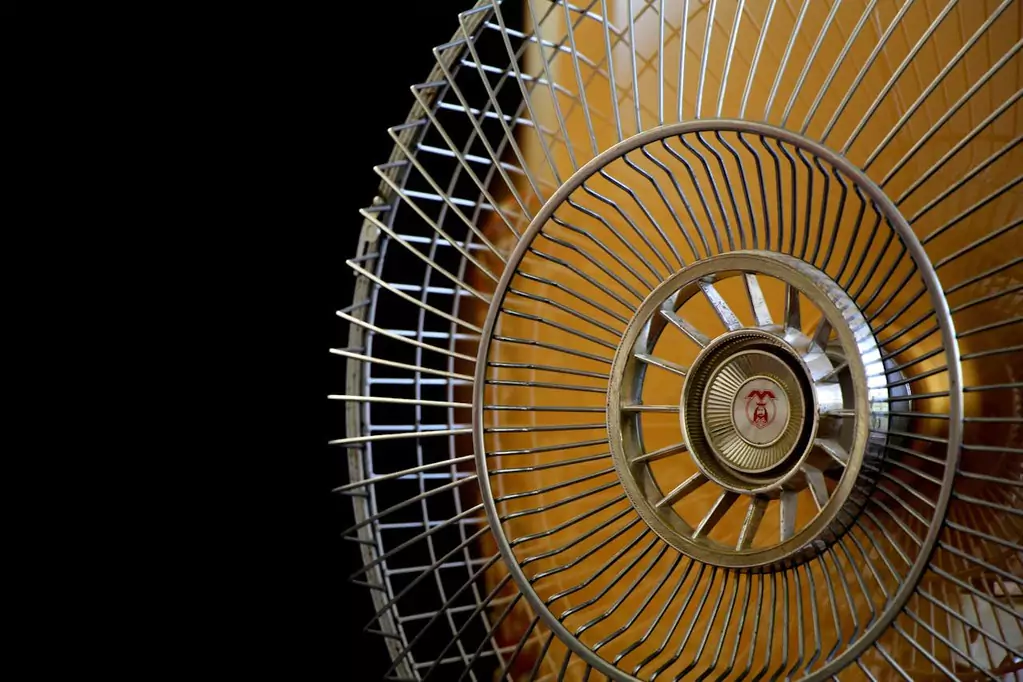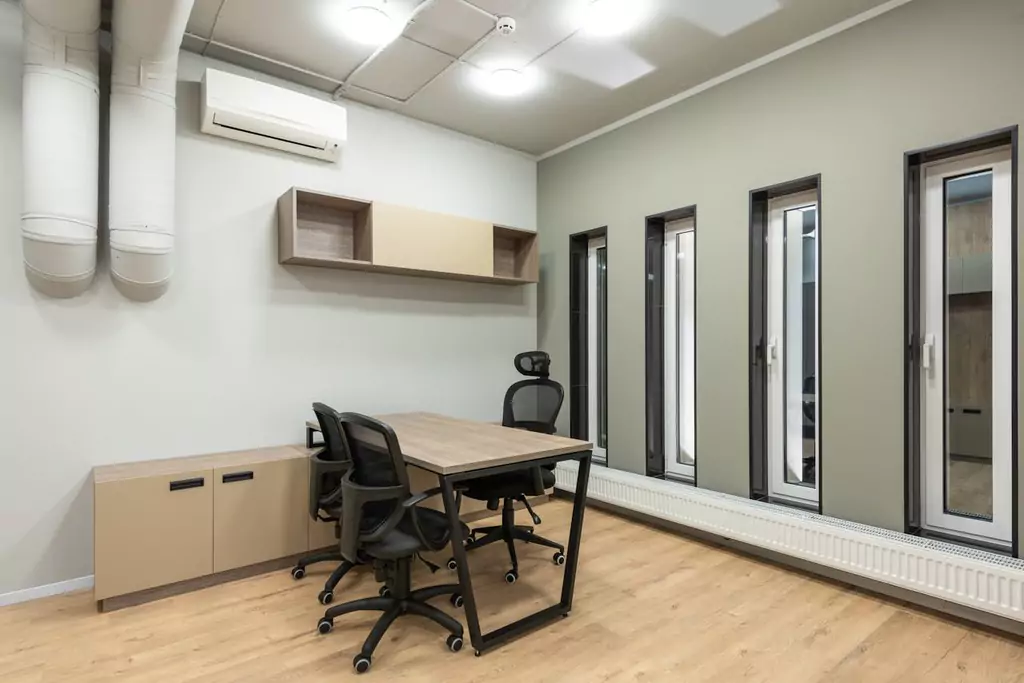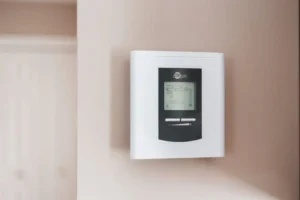Now Reading: AC Fan Mode vs Normal Fan: Which Is Better for Your Home
- 01
AC Fan Mode vs Normal Fan: Which Is Better for Your Home
- Home
- Home Appliances
- AC Fan Mode vs Normal Fan: Which Is Better for Your Home
AC Fan Mode vs Normal Fan: Which Is Better for Your Home
![]() Anne MaddisonHome Appliances, Climate ControlAugust 15, 202582 Views
Anne MaddisonHome Appliances, Climate ControlAugust 15, 202582 Views

If you have ever explored the settings on your air conditioner, you might have noticed something called “fan mode.” At first glance, it might seem similar to just turning on a regular fan in your living room or bedroom. But while both options move air around, they are not the same, and knowing the difference can make a big impact on your comfort, your energy bill, and even the air quality in your home.
Many people are not sure when to use AC fan mode versus a normal fan. The confusion is understandable because both are designed to keep you feeling cooler, but they work in completely different ways. Fan mode relies on your air conditioner’s internal system, while a normal electric fan is a standalone device that you can move around the house.
In this guide, we will explain exactly how each one works, when each option works best, and which might be the better choice for your home in different situations. By the end, you will know when to choose AC fan mode, when to use a normal fan, and how to get the most comfort for the least amount of energy.
How Does AC Fan Mode Work
Fan mode is a setting that uses the fan inside your air conditioner to keep air moving through your home without running the compressor the entire time. The compressor is the part of your AC that does the actual cooling, and it uses the most energy. When you switch to fan mode, the system focuses on air circulation rather than active cooling, which can use less power overall.
In fan mode, the air handler pulls air from inside your home, passes it through the AC’s filters, and sends it back into your rooms. This helps move cooled air around after the compressor has done its job, so you feel more even comfort without the constant hum of cooling cycles.
Continuous vs Auto Settings in AC Fan Mode
When using fan mode, you often have the choice between “On” (continuous) and “Auto.”
- On/Continuous keeps the fan running non-stop, whether the AC is actively cooling or not. This can improve airflow and help with consistent temperatures.
- Auto runs the fan only when the compressor is cooling. Once the temperature is met, both the compressor and fan shut off until the next cycle. This usually saves more electricity than keeping the fan on continuously.
Benefits of AC Fan Mode
One of the biggest advantages is better air circulation. It can help eliminate hot or cold spots in the home, so each room feels more comfortable. It also keeps air moving through the filter, which can improve indoor air quality by capturing dust and allergens more regularly.
Possible Drawbacks of Fan Mode in Air Conditioners
Even though fan mode uses less electricity than full cooling mode, it still requires power to keep the fan running. Also, if you live in a humid climate, running the fan when the compressor is off might reintroduce moisture into the air, making your home feel less comfortable.
If you are trying to cut down on your energy bill, you might also want to read our guide on which air conditioner mode saves the most electricity.
How Does a Normal Electric Fan Work in the Home
When we talk about a “normal fan,” we mean the common types you might already have around the house — like a stand fan, ceiling fan, box fan, or tower fan. These fans don’t cool the air in the same way an air conditioner does. Instead, they create a steady breeze that helps sweat evaporate from your skin, which makes you feel cooler even though the actual room temperature stays the same.
Normal fans work by simply moving air around the space. The airflow helps prevent heat from building up near your body, which is why you can feel more comfortable sitting under a ceiling fan or with a floor fan pointed your way, even on a warm day.
Benefits of Normal Fans
One big advantage of a normal fan is energy use. Fans require far less electricity than running an air conditioner system, even in fan mode. That makes them an affordable option for mild weather or for use alongside your AC to help spread cool air more effectively.
Limitations of Normal Fans Compared to AC Fan Mode
A normal fan cannot actually lower the temperature or remove humidity from the air. If the air in your home is already hot and sticky, a fan can make it feel more bearable, but it will not solve the underlying heat problem. This is where AC fan mode has an edge because it works within your cooling system, allowing it to circulate air that has already been cooled and filtered.
Key Differences Between AC Fan Mode and Normal Fan
Sometimes it’s easier to compare cooling options side by side. Here’s a quick breakdown of how AC fan mode and a normal fan stack up:
Feature | AC Fan Mode | Normal Fan |
Energy Use | Uses more electricity than a normal fan because it runs inside the AC system | Very low energy consumption |
Cooling Method | Circulates cooled, filtered air from the AC system | Moves air to help you feel cooler without lowering temperature |
Cost to Run | Higher than a normal fan but lower than full AC cooling mode | Very low operating cost |
Air Quality Impact | Air passes through AC filters, improving indoor air quality | Does not filter air |
Best for | Distributing cool air evenly in an already cooled home | Providing personal comfort in smaller areas or alongside AC |
Humidity Control | Minimal in fan mode, better if AC compressor runs occasionally | No humidity control |
Which Works Best for Different Spaces
- Small Rooms: A normal fan is often enough, especially if the air isn’t overly hot or humid.
- Large Spaces: AC fan mode can help push cooled air into all corners of the room, keeping temperatures more even.
- Bedrooms: It depends on your needs. A normal fan works well if you just want a breeze at night, but AC fan mode may feel better if you prefer filtered, cooler air.
Comfort on Hot and Humid Days
On extremely hot, sticky days, AC fan mode is usually more comfortable because it works within the cooling system, even if the compressor isn’t running constantly. A normal fan will still give you some relief, but it won’t lower the temperature or humidity, so the air might feel heavier.
Tips for Choosing Between AC Fan Mode and a Normal Fan at Home
Picking between AC fan mode and a normal fan is not a one-size-fits-all decision. Your choice will depend on your climate, comfort needs, and how much you care about your energy bill. Here’s how to figure it out.
Think About Your Climate
- Hot and Dry: A normal electric fan might be enough most days since dry air feels cooler when it’s moving.
- Hot and Humid: AC fan mode is usually more comfortable because it works with your cooling system to circulate filtered air and help with humidity.
Match Your Comfort Preferences
Some people love a strong breeze right on them, while others prefer a gentle, even room temperature.
- If you like direct airflow, an electric fan works best.
- If you prefer whole-room circulation with cleaner air, AC fan mode is the winner.
Consider Noise Levels
Normal fans can be quiet or loud depending on the design, while AC fan mode is often more consistent but still noticeable. If you’re sensitive to noise at night, test both options before committing.
Watch Your Energy Costs
- On a budget: A normal fan costs far less to run.
- Balanced comfort and efficiency: AC fan mode uses more electricity than a normal fan but less than full cooling mode.
Combine Both for the Best of Both Worlds
You can use AC fan mode to keep the room evenly cool and add a normal fan for a personal breeze. This can help you raise the thermostat a few degrees and still feel comfortable.
Quick Tips for Improving Airflow in Any Mode
- Keep vents and fan blades clean for better performance.
- Use ceiling fans to help move air more efficiently.
- Close blinds or curtains on hot days to reduce heat gain.
- Make sure your aircon filter is clean so the fan mode runs efficiently.
If you have indoor plants, you may want to check out our article on whether air conditioner kill plants to keep them healthy year-round.
Frequently Asked Questions About AC Fan Mode and Normal Fan
Is AC fan mode cheaper than using a normal fan?
Usually, no. A normal fan uses much less electricity than AC fan mode. AC fan mode still runs the indoor fan motor inside your air conditioner, which draws more power than a small stand or ceiling fan. If saving money is your top goal, an electric fan will almost always cost less to run.
Does AC fan mode help filter dust and allergens?
Yes. When your AC fan mode is on, the air passes through your system’s filter, which can trap dust, pollen, and other particles. A normal fan just moves air around and doesn’t clean it. If air quality is important to you, AC fan mode has the advantage.
Can you run AC fan mode all night?
You can, but it’s not always the most efficient choice. Running the aircon fan all night gives steady air circulation and filtration, but it can also use more electricity than you need. If you want cleaner air while sleeping, just make sure your filter is clean and consider the “auto” fan setting instead of “on” to save energy.
Which is better for sleeping?
It depends on your needs. A normal fan can give you a steady breeze and white noise, which many people find relaxing. AC fan mode keeps the air moving evenly through the room and can help with allergies, but it might not give that direct cooling feeling some people like.
Final Thoughts
AC fan mode and a normal fan may seem like they do the same thing, but they work in very different ways. AC fan mode moves air through your cooling system and filter, helping with air quality and even temperature distribution. A normal fan simply moves air around the room, giving you a direct cooling breeze at a much lower energy cost.
The best choice often comes down to your priorities. If you want cleaner air and steady circulation, AC fan mode might be your pick. If you are focused on saving energy or just need a quick breeze, a normal fan could be the smarter choice.
The truth is, you do not have to stick with just one. Experiment with both to find the balance that works for you, your comfort, and your budget. Check your AC settings today, try different fan modes, and see which setup keeps your home feeling its best.
Related Posts
Previous Post
Next Post
Climate ControlJuly 28, 2025
Can Air Conditioner Make You Sick?
Home AppliancesJuly 27, 2025
What Air Conditioner Size Do I Need?
Climate ControlAugust 24, 2025
Are Home Air Conditioner Tune Ups Necessary
Climate ControlAugust 23, 2025
Can Air Conditioning at Home Trigger Asthma?
- 03
Climate ControlJuly 28, 2025
Can Air Conditioner Make You Sick?
- 04
Home AppliancesJuly 27, 2025
What Air Conditioner Size Do I Need?























